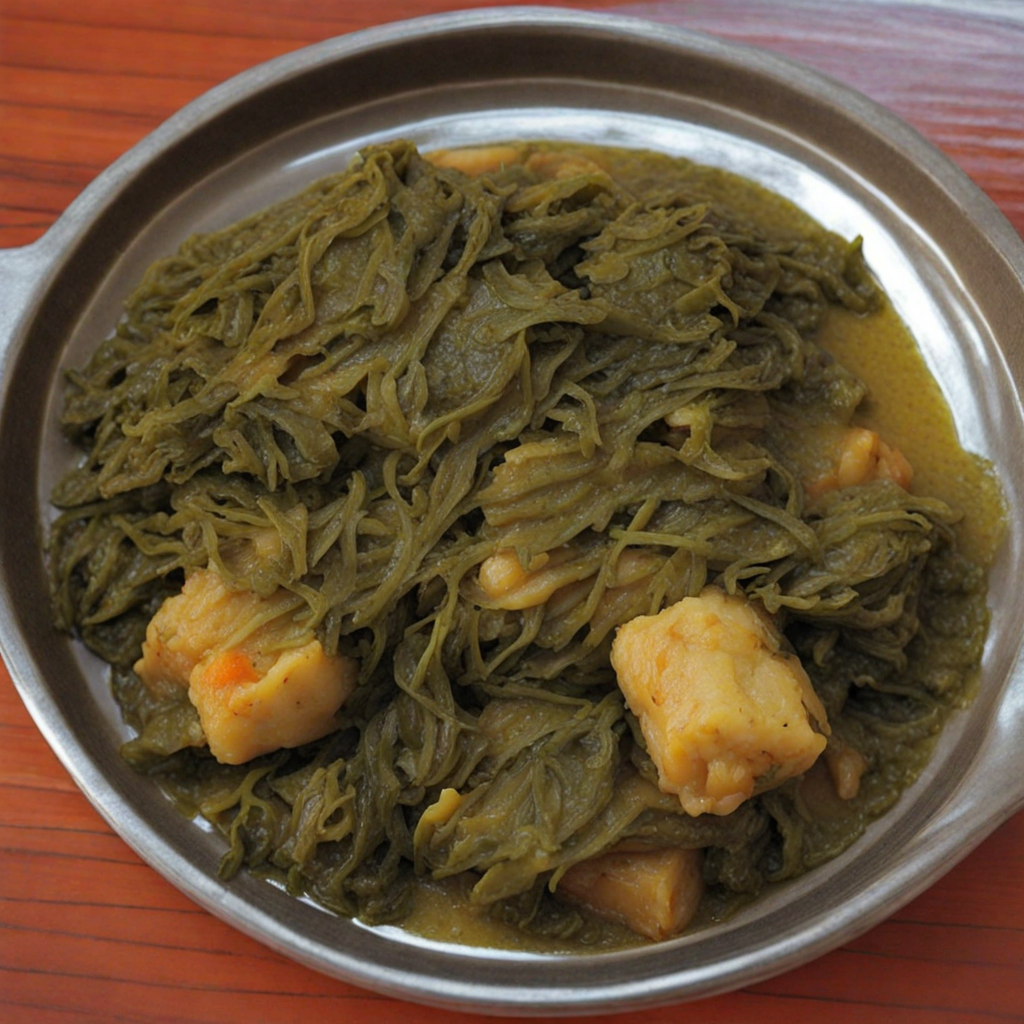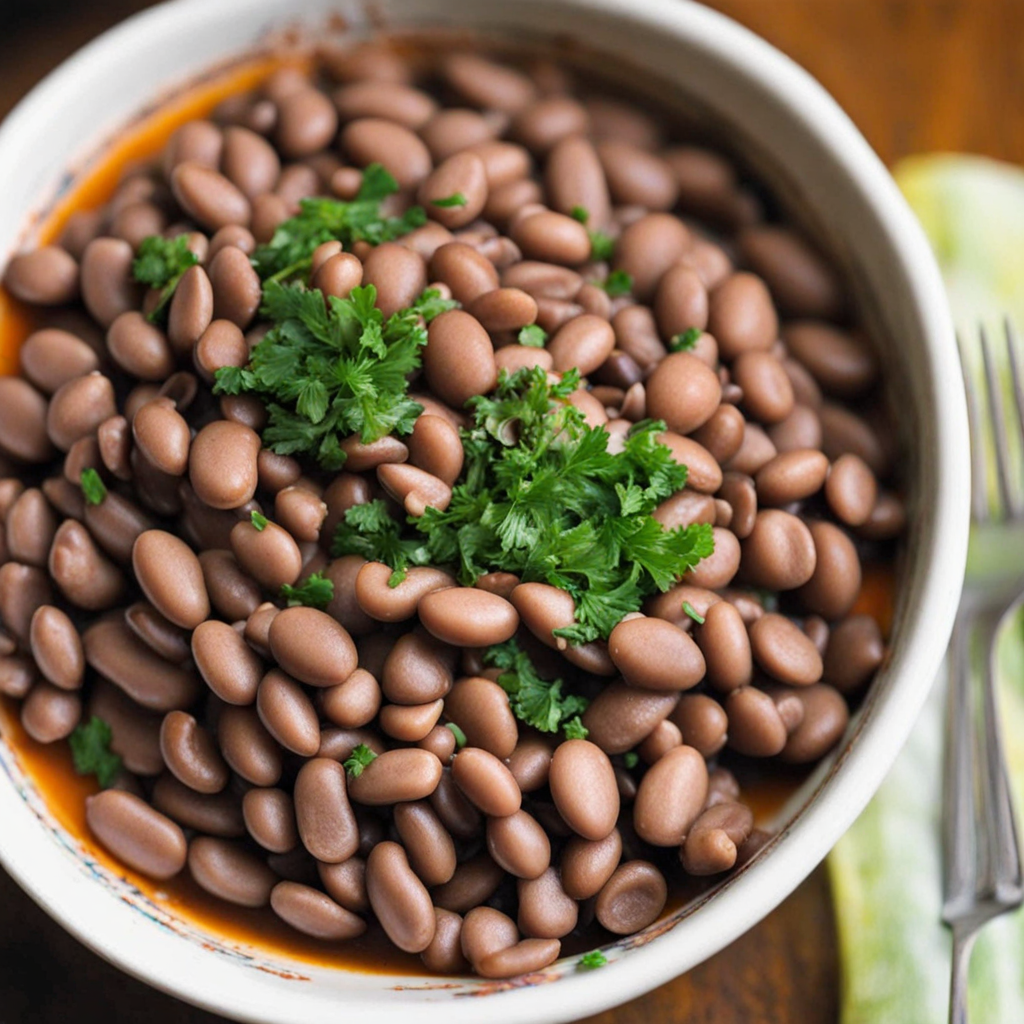Olehleh
Olehleh is a uniquely vibrant dish from Sierra Leone that embodies the rich culinary traditions of West Africa. This hearty dish is primarily made from a blend of mashed cassava and sweet potatoes, which are skillfully combined to create a smooth and creamy texture. The base is often enriched with a variety of spices, including ginger, garlic, and a hint of chili, giving it a warm and inviting flavor profile. The use of fresh, local ingredients not only enhances the taste but also reflects the agricultural abundance of the region, making Olehleh a true representation of Sierra Leone's rich food heritage. In addition to its starchy foundation, Olehleh is frequently complemented by an array of colorful vegetables, such as vibrant bell peppers, green onions, and leafy greens. These vegetables add not just nutrition but also a delightful crunch and freshness to the dish. Often, it is served alongside a protein, such as grilled fish or stewed meat, which provides a savory contrast to the sweetness of the cassava and sweet potatoes. This combination creates a well-rounded meal that is both satisfying and nourishing. The cultural significance of Olehleh extends beyond its delicious taste; it is often prepared for special occasions and communal gatherings, symbolizing unity and togetherness. The process of making Olehleh is typically a communal affair, where families and friends come together to share in the preparation, making it a dish that brings people closer. For those seeking to discover new flavors, Olehleh offers a delightful exploration of Sierra Leone's culinary landscape, inviting you to experience the warmth and hospitality that is characteristic of this West African nation.
How It Became This Dish
The Rich Tapestry of Olehleh: A Culinary Gem from Sierra Leone Introduction Olehleh, a traditional dish from Sierra Leone, embodies the essence of West African cuisine, characterized by its richness in flavors, textures, and cultural significance. With its deep roots in Sierra Leone's diverse ethnic groups, Olehleh is more than just a meal; it is a symbol of community, history, and the resilience of the Sierra Leonean people. Origins of Olehleh The origins of Olehleh can be traced back to the indigenous peoples of Sierra Leone, particularly the Mende, Temne, and Limba communities. These ethnic groups, with their unique agricultural practices and culinary traditions, have influenced the development of Olehleh over centuries. The dish is primarily made from cassava, a staple crop in West Africa, which has been cultivated in the region for thousands of years. Cassava's adaptability to various soil types and climates made it a crucial food source, especially in areas prone to drought. The name "Olehleh" is derived from the Mende language, where "ole" refers to the process of grinding or pounding, and "leh" translates to food or meal. This etymology reflects the traditional preparation method of the dish, which involves grinding cassava into a fine paste, mixing it with palm oil, spices, and sometimes fish or meat, and then steaming it in banana leaves. The use of banana leaves not only imparts a subtle flavor to the dish but also showcases the sustainable practices of local communities. Cultural Significance Olehleh holds a deep cultural significance in Sierra Leone. It is often prepared for communal gatherings, celebrations, and rituals, serving as a unifying dish that brings families and communities together. The preparation of Olehleh is typically a collective effort, emphasizing the values of cooperation and tradition. Women, who have historically been the custodians of culinary knowledge, play a vital role in the preparation of this dish, passing down techniques and recipes through generations. In many communities, Olehleh is served during significant life events, such as weddings, christenings, and festivals. Its presence at these gatherings signifies abundance and hospitality, as well as a connection to ancestral roots. Moreover, the dish is often associated with storytelling and oral traditions, as families share tales of their heritage while enjoying a meal together. Development Over Time As Sierra Leone has evolved through various historical phases, including colonial rule, civil conflict, and post-war recovery, so too has the dish of Olehleh. During the colonial era, the introduction of new ingredients and cooking methods influenced traditional recipes, leading to a fusion of flavors. Ingredients such as spices from the coast and imported goods began to make their way into the kitchens of Sierra Leone, enriching the culinary landscape. The civil war in Sierra Leone, which lasted from 1991 to 2002, disrupted many aspects of life, including agriculture and food production. As communities struggled to maintain their traditions amid chaos, Olehleh became a source of comfort and resilience. Preparing and sharing this dish allowed people to reconnect with their cultural identity, fostering a sense of hope and solidarity in difficult times. In the years following the conflict, there has been a revival of interest in traditional foods like Olehleh as part of a broader movement to reclaim cultural heritage. This resurgence has been supported by local chefs and culinary enthusiasts who seek to highlight Sierra Leonean cuisine both nationally and internationally. Olehleh has found its way onto menus in restaurants, food festivals, and cultural events, where it is celebrated as a symbol of Sierra Leone's rich culinary heritage. Modern Interpretations and Global Reach In recent years, Olehleh has transcended its traditional boundaries, finding a place in the global culinary scene. With the rise of interest in African cuisines worldwide, chefs are experimenting with Olehleh, incorporating contemporary cooking techniques and innovative ingredients while still honoring its roots. Food bloggers and influencers are also sharing recipes and stories about Olehleh, helping to introduce this delicious dish to a wider audience. As the diaspora of Sierra Leoneans spreads across the globe, Olehleh serves as a reminder of home for many. It is often prepared in households around the world, evoking memories of family gatherings and cultural celebrations. In this way, Olehleh continues to serve as a bridge between generations, connecting those who have migrated with their heritage and traditions. Conclusion Olehleh is a testament to the enduring spirit of Sierra Leonean culture and cuisine. Its origins, steeped in the agricultural practices of the region, reflect the importance of community and shared experiences in food preparation and consumption. As the dish has developed over time, it has remained a symbol of resilience, unity, and cultural pride. As we look to the future, Olehleh stands poised to continue its journey, evolving while remaining true to its roots. It serves as a delicious reminder of Sierra Leone’s rich history and the power of food to connect people across generations and borders. Whether enjoyed in a bustling market in Freetown or a family gathering in the diaspora, Olehleh is more than just a dish; it is a celebration of Sierra Leonean identity and heritage, inviting all who partake to savor its flavors and stories.
You may like
Discover local flavors from Sierra Leone







